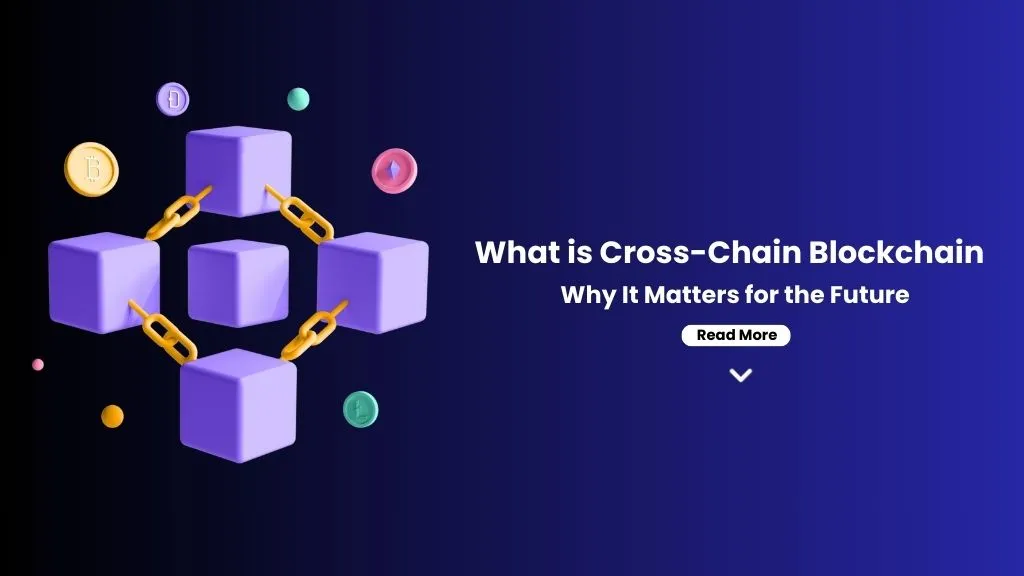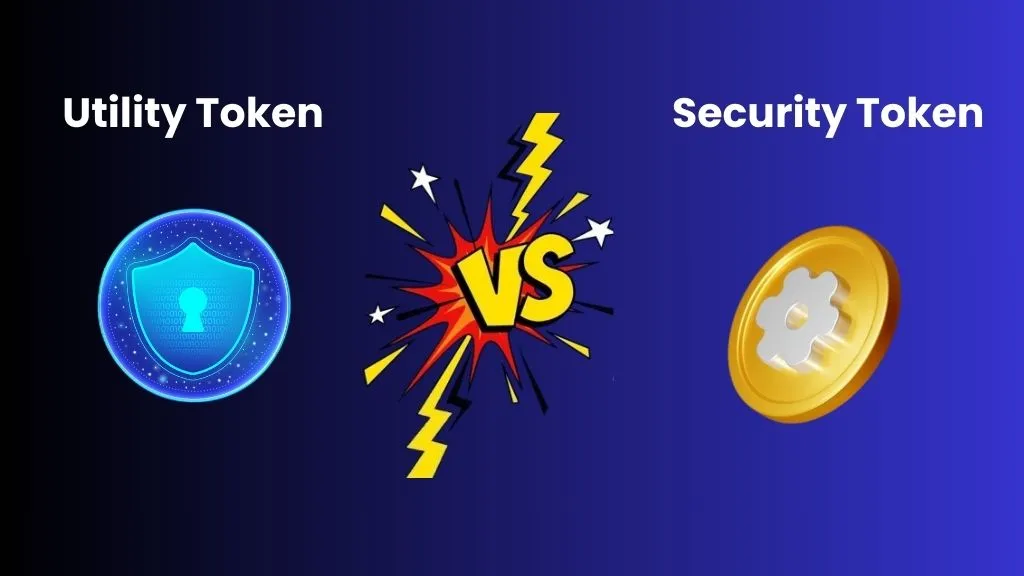Blockchain works based on the concept of distributed ledger technology. It supports transparency, and security to prevent fraud. Its decentralized nature and elimination of third-party roles enable it to have prevalent use cases in giant business domains like supply chain, real estate, finance, healthcare, etc. Despite revolutionizing the major sectors, certain loopholes need to be addressed, leading to the invention of a new concept of Cross-chain blockchain.
Emergence of the Cross-Chain Blockchain Technology
An array of blockchain technology covers various blockchain networks that handle their own cryptocurrency efficiently. Every blockchain network offers unique features and uses that might be missing in the others. This is why businesses cannot leverage the potential of two distinct blockchains together.
To address these challenges, the concept of interoperability plays a pivotal role. The more blockchain interoperability, the better will be the communication efficiency across two different blockchain networks. Blockchain interoperability facilitates the quick and secure transfer of information and assets to another blockchain network with less gas fee.
Blockchain Interoperability
Blockchain interoperability refers to the ability of blockchain networks to communicate with other blockchain networks used for data sharing in blockchain and execute transactions. It enables the blockchain-powered systems to interact without requiring any third party.
Interoperability standards and protocols bridge the gap between two separate blockchains to stay interconnected. Also, It enhances the functionality of the blockchains, expanding the use cases of blockchain technology across various business domains by offering features like high scalability and less processing time.
Unfold The Problems that Arise without Blockchain Interoperability
- The non-interoperability disallows users to directly transfer the BTC for ETH without the role of the centralized cryptocurrency exchange.
- The absence of blockchain interoperability within Blockchain and Ethereum does not allow the users to utilize their crypto funds within the DeFi ecosystem powered by Ethereum.
- The most popular cryptosystems, Ethereum and Binance Smart Chain, do not allow the transfer of USDT between each other and to other blockchain platforms however, they both individually support USDT(Tether)
Understand the Cross-chain Bridges & Their Importance
Ethereum, a leading smart contract platform, supports cross-chain bridges, NFTs, and other blockchain abilities. Cross-chain bridges enable the smooth inter-communication of two blockchain networks in a secure manner, which is still evolving to overcome the current challenges.
The inception of the cross-chain bridges eliminates the need for the centralized system to securely pass the information in a verifiable manner. The cross-chain bridges operate on automated software to exchange the cryptocurrency independently.
Working of the Cross-chain Bridges in Blockchain Technology
Different cross-chain brides work with unique principles while fulfilling the same motive of secure transfer of assets and transactions between two blockchains. Check out the below-mentioned steps to understand the working mechanism of the cross-chain bridges:
Locking and Minting of the Assets
Asset Transfer from the Source to Cross-bridge
Let us assume a person wants to transfer the assets built on the Ethereum network to Binance. First, transfer the asset from your Ethereum wallet to the cross-chain bridge. Then, the cross-chain bridge will lock your assets.
Notify the Target Chain
Once the coins are locked on the Ethereum cross-chain bridge, it registers and informs the destination blockchain network about holding the assets.
Wrap the Asset on Target Network
Once the message reaches the target blockchain network, the cross-chain bridge wraps the assets transferred from the source. It means creating a copy of the locked assets representing the original Ethereum assets that can be used on the Binance blockchain just like its native coins.
Unlocking and Burning of the Assets
Wrapped Asset Burning on Target Blockchain
Burning is moving the Wrapped assets to the destination blockchain to keep them out of circulation. It ensures that the assets cannot exist on the Binance blockchain system.
Notifying the Source Chain about Burning
The Binance cross-chain bridge sends a message to the Ethereum network that the assets are no longer wrapped on the destination.
Unlocking the Assets on the Initial Chain
Once the source blockchain is updated, the Ethereum blockchain bridge unlocks the original assets and sends them back to the initiated address.
Unwrap the List of Cross-chain Technology Protocols
Atomic swaps
Atomic swaps offer a trustless exchange ecosystem to facilitate cross-chain transactions with no role as an intermediary. In Atomic swaps, the smart contracts support simultaneous transaction execution on both networks that no party can deny. This setup ensures better security and decentralization for asset transfer across two blockchains.
It works based on the Hashed Timelock Contracts (HTLCs). It involves HTLCs on the blockchains incorporating a hash lock along with a time lock for the execution of the smart contracts simultaneously on both networks.
Interledger Protocols
Interledger protocols are designed to offer frictionless cross-blockchain transactions, founded by Stefan Thomas, Ripple. It facilitates fast payments through a cost-effective method. The Interledger protocol has nodes :
Senders-Who want to transfer the asset
Receiver- Who is interested in receiving the assets
Connectors- They charge fees for asset transfer and are designed to compete for better reliability, cost, and speed.
It has four layers that work together to complete a transaction between two unique chains.
Application Layer: The application layer works as a space where the apps reside and acquire the details about initiating the transaction.
Transport layers: It examines the exchange rate, encodes the information packages, acknowledges packets, establishes connections, and controls the overall flow.
Interledger: It selects the path for payment transfer and monitors the payment arrivals or expirations
Link: It works as the path to inter-exchange over the WebSocket
Sidechains and Pegged Assets
Recognized as a scalable solution for cross-chain, this environment allows the developers to explore further to add new functionalities while maintaining blockchain interoperability across a wide range of networks. It ensures the decentralized execution of processes like verifying, unlocking, and locking in cross-chain transactions on the main chain by collecting data from the side chains. The assets that are meant to be transferred are pegged through smart contracts on the source, and an equal amount as the pegged asset is minted on the destination chain.
What are the Benefits of the Blockchain Interoperability?
Better Connectivity
Data exchange between the two blockchains is a complex process that needs optimal protocol standards to establish secure connectivity. The interoperable solutions foster innovation and development of blockchain-powered projects that push the boundaries of trust, scalability, and efficiency when two blockchains come together.
Enhanced User-experience
Cross-chain in blockchain offers an integrated environment to exchange assets across different blockchain networks. It results in high flexibility and accessibility of digital assets. With increased user experience comes better user engagement, resulting in a higher adoption rate of the cross-chain in multiple business vertices.
More Use Cases
By adopting cross-chain technology, a wide range of commercial industries can unveil the plethora of use cases that can strengthen the overall efficiency of business operations. Its use cases can extend to the DeFi, supply chain management, Web3 gaming industry, and other industries. The potential of Blockchain interoperability can address the multiple existing challenges to unlock immense financial opportunities.
Unwind the Cross-chain Technology Challenges
Data Immutability
Two unique blockchains work under different consensus mechanisms and governance rules, therefore, maintaining data immutability is a complex challenge to overcome. Without strong blockchain interoperability protocols, vulnerabilities and inconsistencies can disturb the decentralized nature. Robust cross-chain protocols can maintain the core nature of both types of blockchains.
Regulatory Issues
Another challenge in blockchain interoperability is the regulatory governance and legal complications that can affect cross-chain transactions. It plays a major role in the adoption rate of cross-hain blockchain use cases.
The legal considerations for the deployment of the cross-chain blockchain and partnerships of industry experts and policymakers can help build the right frameworks and standards to offer high blockchain interoperability.
Cross-chain Blockchain Adoption
Blockchain is a widely accepted decentralized technology with applications in a variety of business domains. However, when it comes to cross-chain blockchain adoption, entrepreneurs still hesitate due to its novice state of development.
Therefore, it is complicated for the adopters to show their trust in this advancement. On the other hand, developers also need time to explore blockchain interoperability methods further. Only after all this can users confidently embrace the concept of cross-chain.
Scalability
Cross-chain blockchain technology faces scalability issues to date as proper coordination and compliance are missing between the two interoperating blockchain networks. As the size of the cross-chain systems expands, the number of users increases, and transaction volume rises, the chances of increasing the issues related to scalability can significantly damage the efficiency.
Security Complications
The top-most concern about the cross-chain bridges is compromised security standards. The cross-chain bridges eliminate the communication gap between the two parties. The infrastructure of the cross-chain bridge protocols is vulnerable to fraud and attacks on a larger scale. Executing secure transactions simultaneously on different blockchain networks needs powerful mechanisms but is currently in the discovery phase.
Projects Based on Cross-Chain In Blockchain Landscape
Currently, multiple cross-hain compatible projects are running in the market, and some are under development. These cross-chain powered projects overcome the major challenges related to interoperability.
Polkadot
Polkadot is one of the most compatible cross-chain networks with features like :
- Sharability
- High Scalability
- Multi-chain
It offers a cross-chain compatible environment where assets and information are transferred to various other networks by embedding the Polkadot rely chain protocols and its parachains.
Wanchain
Wanchain is another famous cross-chain decentralized platform that offers a cohesive and highly decentralized crypto ecosystem that enables the cross-communication of the assets associated with Ethereum, Bitcoin, and many other digital items.
Cosmos Network
Cosmos network is a group of interoperable decentralized blockchains powered by the Inter-blockchain communication protocol(IBC) similar to the TCP/IP in the internet world. It can encourage solid collaborations of users, developers, and businesses.
The Future of Cross-chain Technology
Analyzing the current scenario, cross-chain blockchain technology is expected to disrupt the industries. With improved cross-communication and high security, its scope will be beyond exchanging digital assets and cryptocurrency.
The power of cross-chain in blockchain can drive the revenue of giant industries like supply chain, retail, education, health & care to securely share the data across different blockchain networks. Major projects like Polkadot and Cosmos are already part of this paradigm shift, and considering their potential, we expect that more industry leaders will join this trend.
Step in the Cross-chain Blockchain Powered Industry
To explore better opportunities to take your business to new heights, consider adopting cross-chain technology. The emergence of Blockchain operability protocols contributes to a high adoption rate in the market.
Our seasoned developers have launched 200+ blockchain-powered projects with ultimate success, and you can collaborate with us and stay assured. You can trust our credibility because we offer
Customized Solutions
Every business needs a tailored approach and innovative solutions. Our experts are ready to present you with a feature-rich blockchain solution that fits your budget and business goals.
Technical Support
As a renowned blockchain development company, we address your technical issues irrespective of the time zone. We are ready to assist you 24*7.
Blockchain Expertise
We put dedicated efforts to keep our clients ahead of the competitive edge. We have valuable expertise in deploying efficient smart contracts and consensus mechanisms with hands-on experience creating revolutionary products. Our handpicked team members stay updated about the latest technology and market trends.
If you want to learn more about cross-chain technology, connect with our industry experts at WisewayTec.






